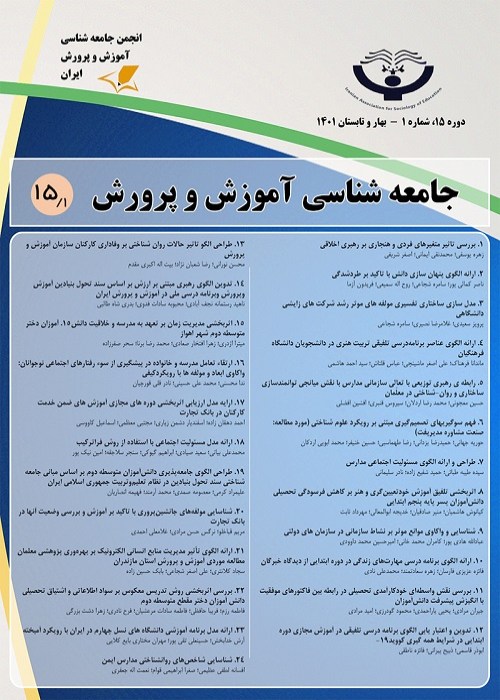Presenting a Social Responsibility Model with Using the Meta-Combined Method
Organizations, as intermediate links between people and society, are important and fundamental components of today's human social body, which need people and society to survive and continue their activities. In the traditional perspective, the focus of the governance makers is based on maximizing the profit of the shareholders, and for this purpose, they seek to establish laws to structure the relations between the board of directors, shareholders and managers and to resolve possible conflicts between them, but in the new perspective, the perspective goes further and is based on It is necessary to consider the consequences of the organization's governance decisions in all stakeholders and all economic, social and environmental dimensions. Social responsibility is a relatively new management paradigm that emphasizes creating a responsible and committed business. Therefore, the present study was conducted with the aim of presenting a social responsibility model with using the meta-combined method.
This study in terms of time was cross-sectional, in terms of purpose was applied and in terms of implementation method was qualitative with using the meta-combination method. The research population was resources related to social responsibility in the last 20 years, which from among 200 available articles according to the desired criteria and the 3 stages of refinement, number of 42 articles were selected as a sample by purposive method. Data were collected by reviewing documents and taking notes from articles, which the reliability of the findings was obtained using the agreement coefficient between the two coders 0.86 and finally, the data were analyzed by themes analysis method in MAXQDA-10 software.
Findings of the present study showed that social responsibility had 65 indicators, 41 categories and 7 dimensions, that were included economic (6 categories), ethical (8 categories), environmental (8 categories), staff (6 categories), regulatory institutions (5 categories). society (5 categories) and governing institutions (3 categories). Finally, the social responsibility model with using the meta-combined method was designed.
The results of the present study indicated the 7 dimensions of economic, ethical, environmental, staff, regulatory institutions, society and governing institutions for the social responsibility model. Organizational officials and managers with the help of the identified dimensions in the present study can provide the basis for improving social responsibility in their organization.
- حق عضویت دریافتی صرف حمایت از نشریات عضو و نگهداری، تکمیل و توسعه مگیران میشود.
- پرداخت حق اشتراک و دانلود مقالات اجازه بازنشر آن در سایر رسانههای چاپی و دیجیتال را به کاربر نمیدهد.


